One of the places I knew I wanted our family to visit as part of our East Coast Road trip was the Bay of Fundy. Hopewell Rocks is outside of Moncton and part of the Fundy National Park. It is where you can experience the highest tides in the world and walk along the ocean floor. This is how we spent a day at Hopewell Rocks.
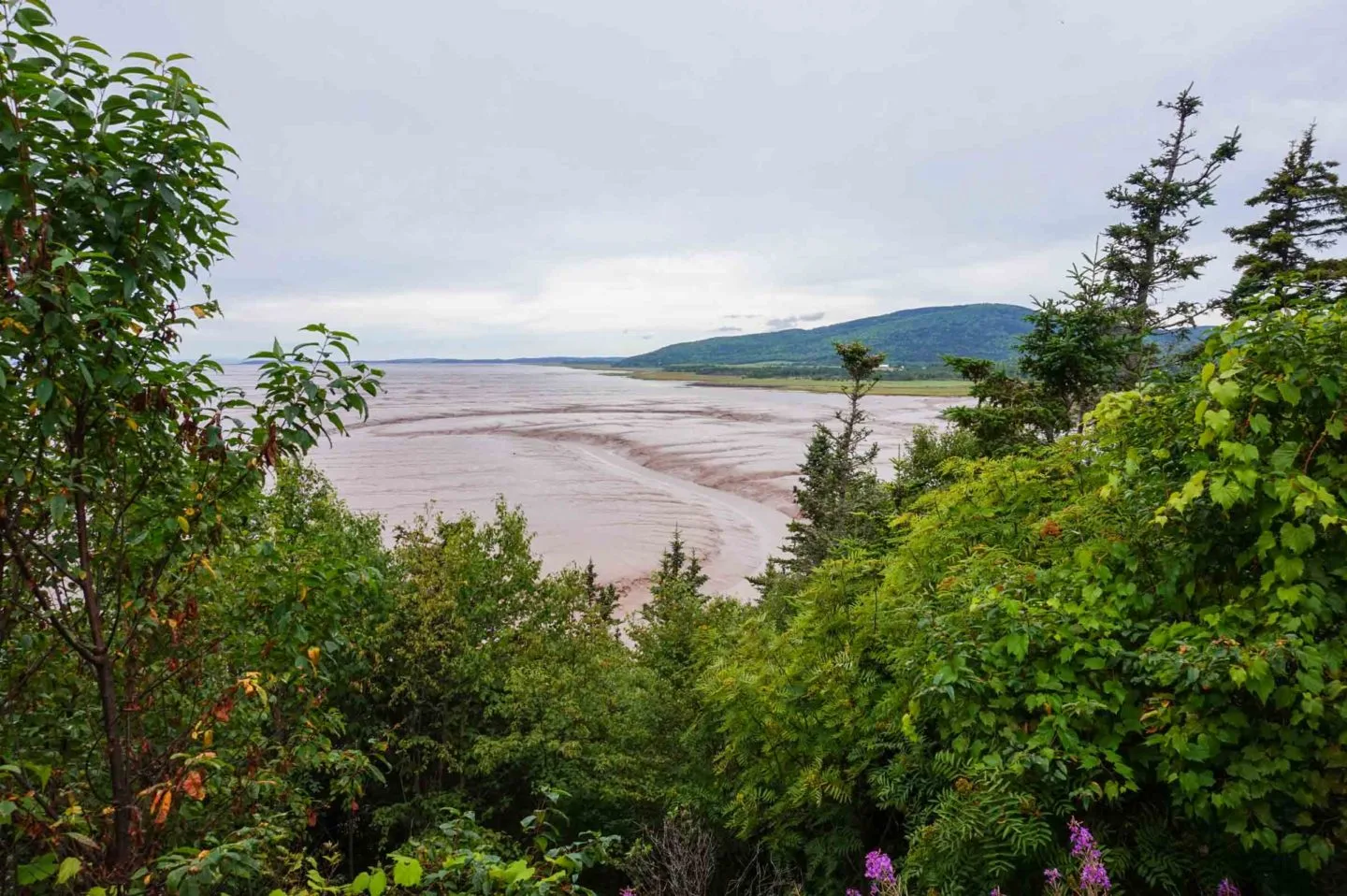
Before you go:
Make sure to pack footwear that can handle the mud.
We packed our rain boots and many people commented on how they wished they had done the same. Another smart option would be water shoes or tevas. Sport sandals can be easily washed down before you hike back to the parking area. If you decide to wear running shoes make sure that you pack extra socks and don’t mind if your shoes get ruined in the mud.
We visited at the end of August. It was warm but not particularly hot, most of us wore shorts and a hoodie or light long sleeve shirt.
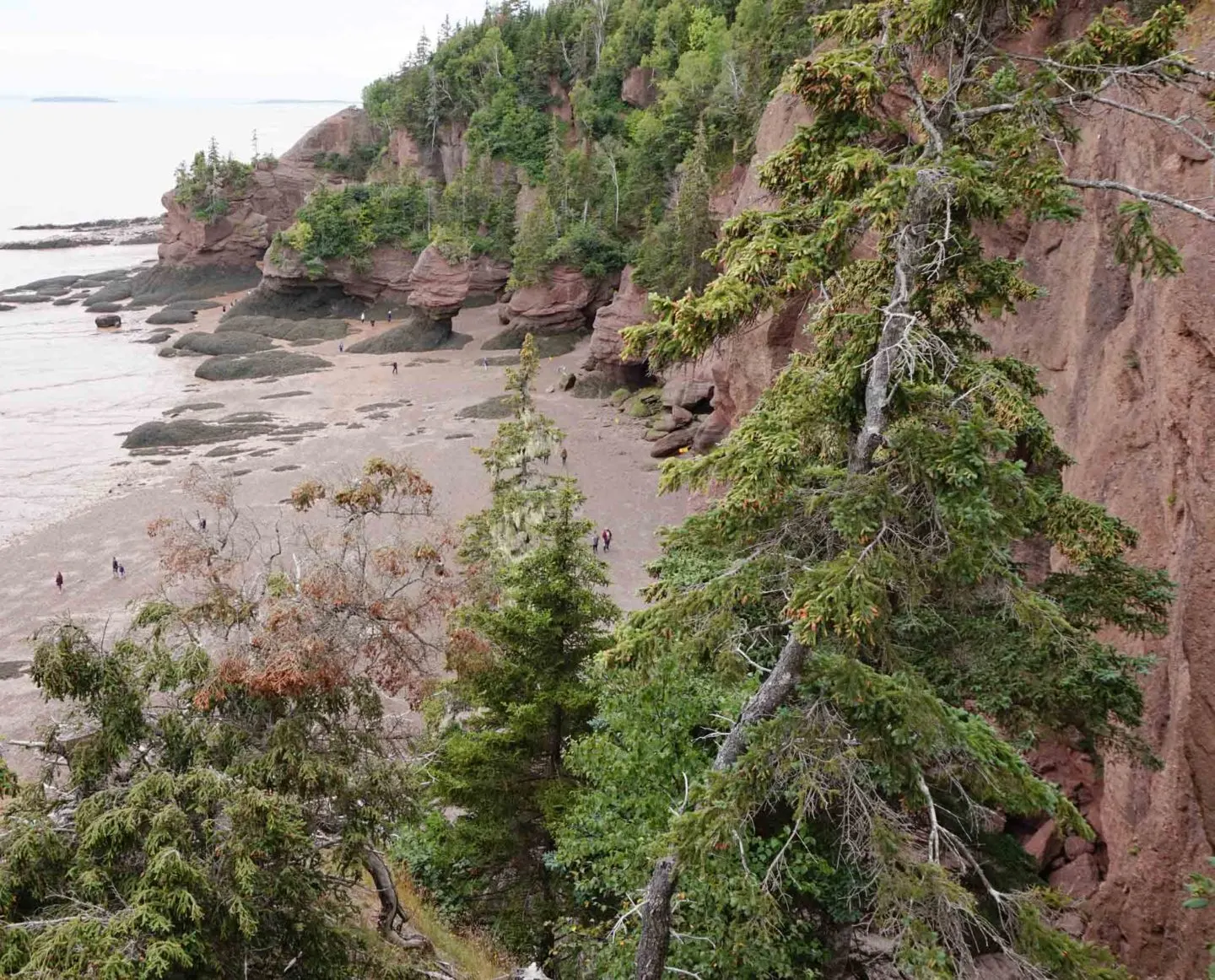
A Day at Hopewell Rocks
We arrived at Hopewell Rocks, which is found in the Canadian province of New Brunswick on the Bay of Fundy, around lunch time. We used the picnic site to stop for lunch before exploring the park. The Bay of Fundy is known for the highest tides in the world. Hopewell Rocks, in particular, is known for rock outcroppings made from the tidal erosion of the sandstone rock along the shoreline. The Hopewell Rocks are also known as the Flowerpot Rocks which isn’t surprising since they resemble the outcroppings on Flowerpot Island in Georgian Bay near Tobermory.
The reason we wanted to visit this iconic Canadian location was the chance to walk on the ocean floor at low tide and walk amongst the Hopewell Rocks.
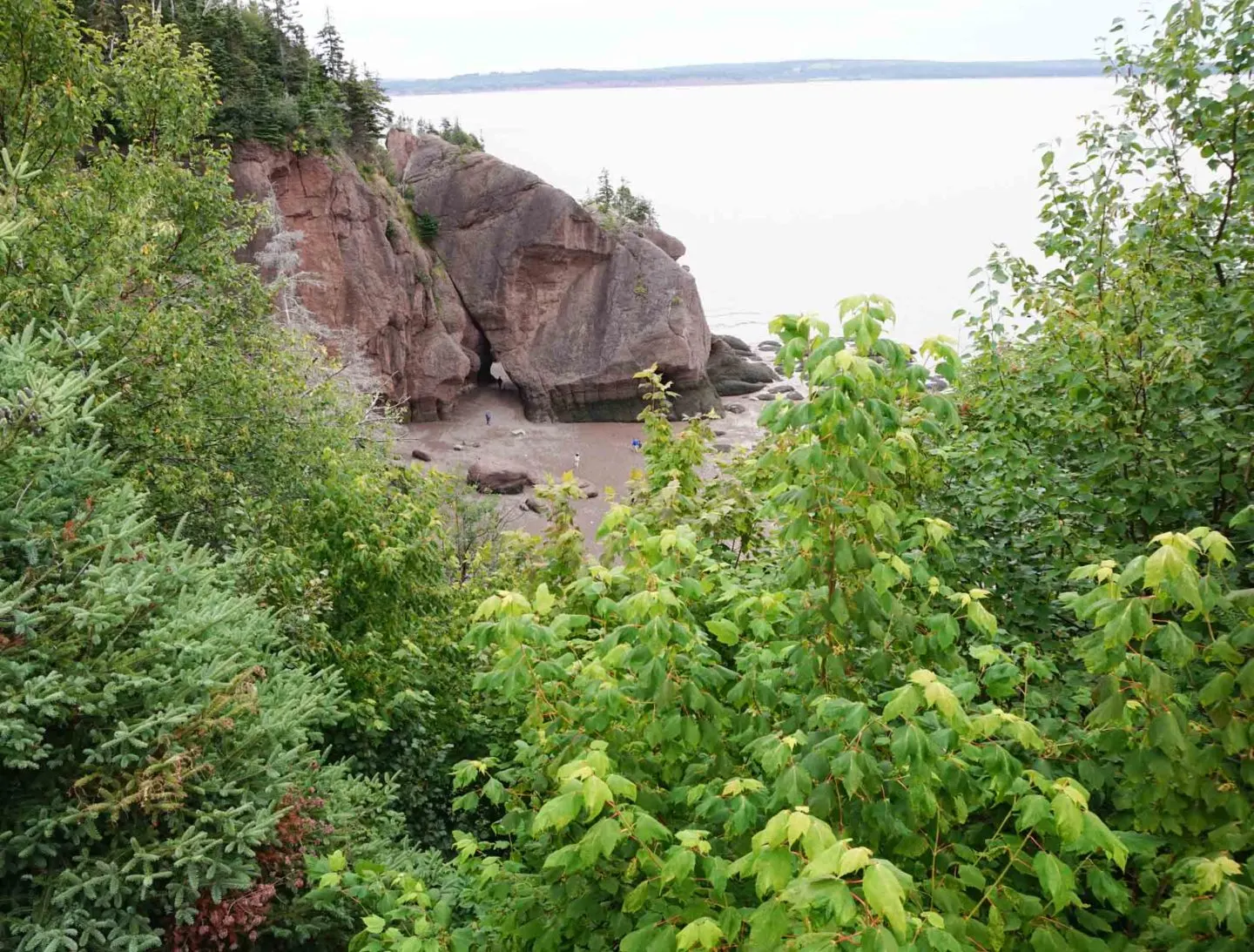
Before we arrived at Hopewell Rocks I made sure to check the tidal schedule. This way we knew that the low tide would coincide with an afternoon visit. Make sure to check the tidal schedule before you arrive so that you don’t show up at high tide or get trapped on the ocean floor. You will be swimming since the tide comes in fast and will be well over your head.
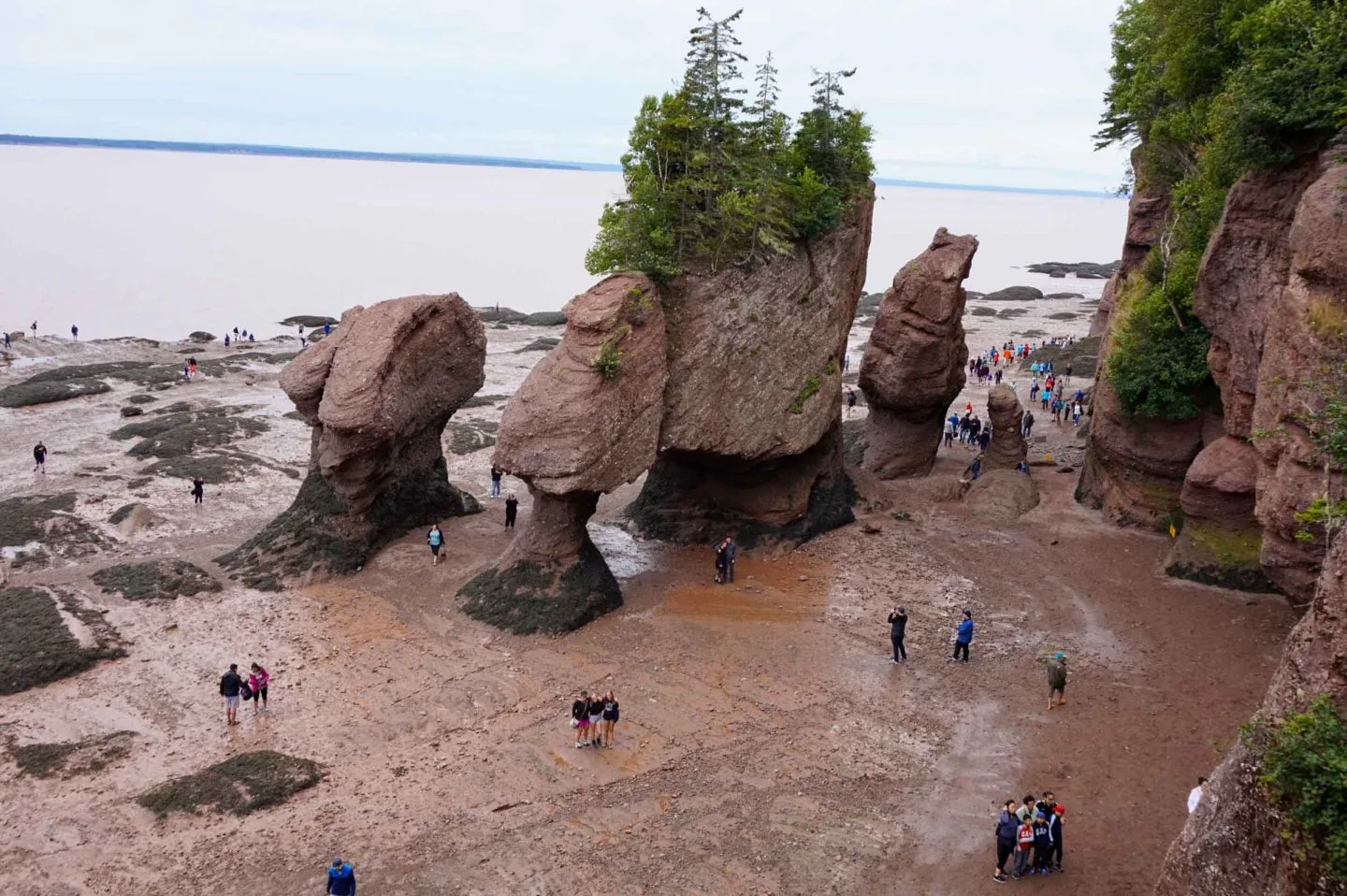
When you pay for your ticket you actually get access to the park for two days. Which is fantastic if you want to visit one day at high tide and another at low tide. If you are limited for time visit at low tide so you can experience walking the ocean floor.
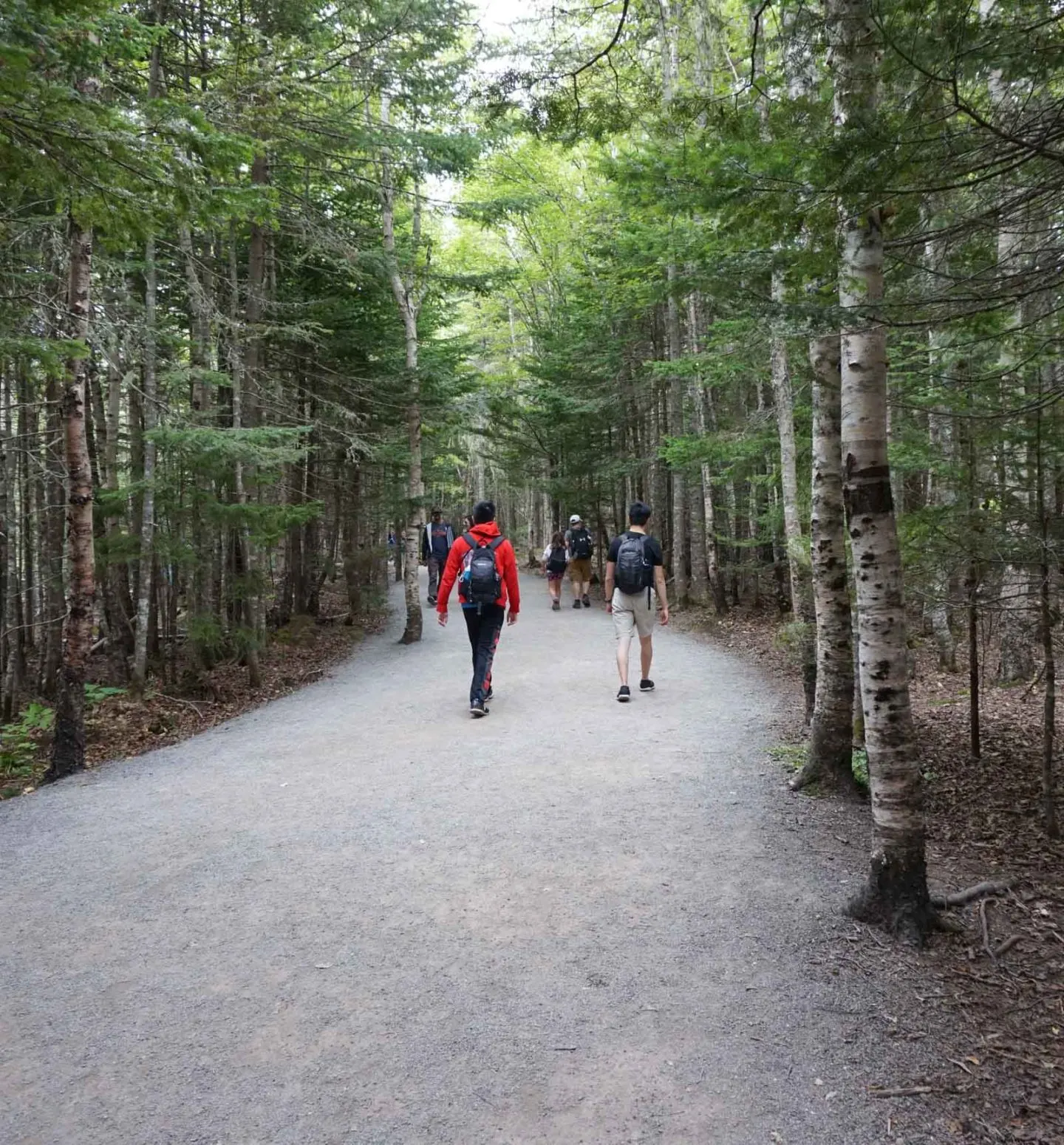
You have two options to get to the stairs down to the ocean floor. You can pay for a shuttle or you can walk the short hike to the stairs. Personally I would save your money and do the hike if you can. There are a number of view points to see the area from above first which you need to see. It is so fantastic to see the area from above and then walk the same spots on the ocean floor.
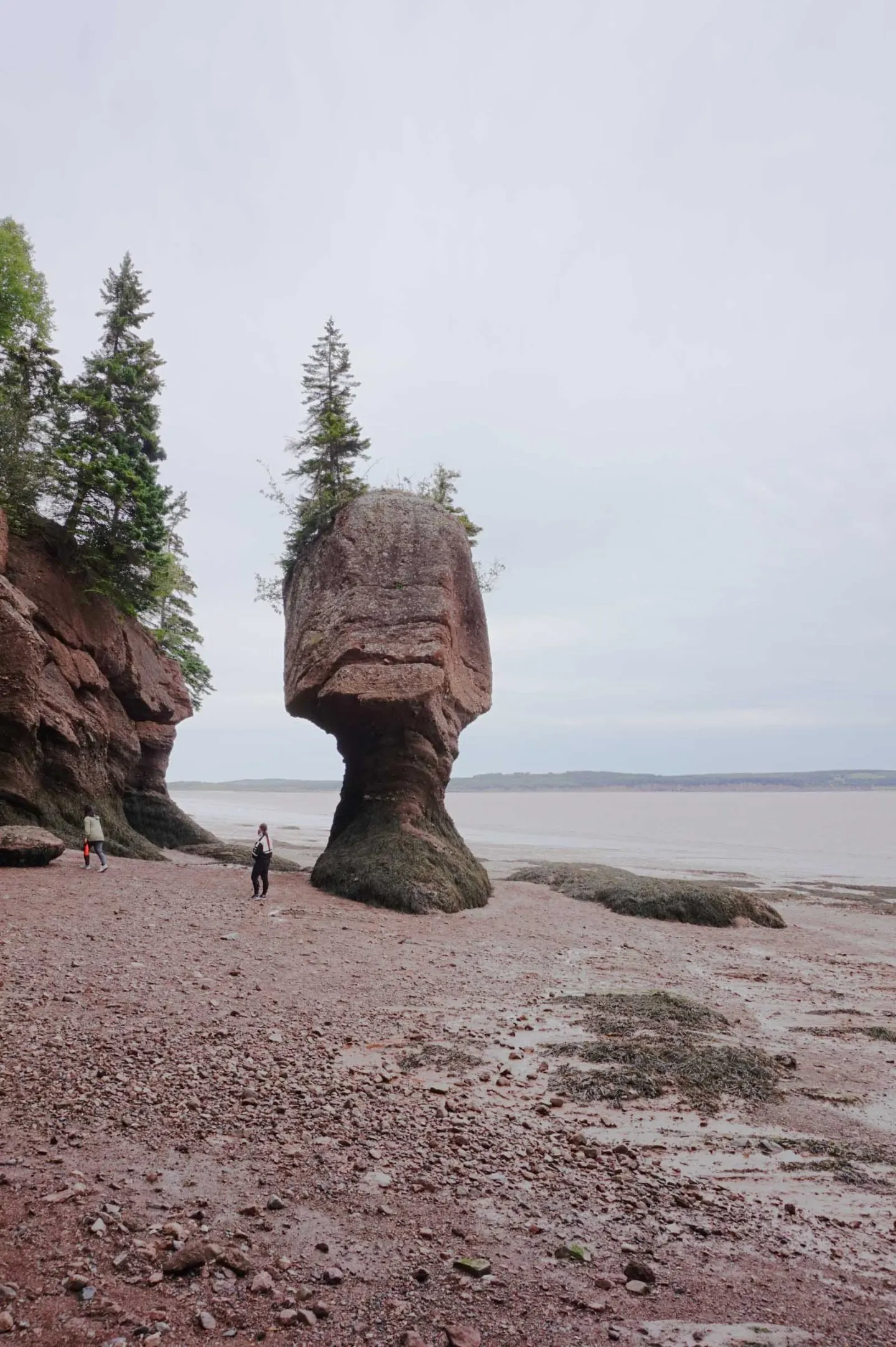
We spent over an hour wandering the ocean floor at Hopewell Rocks. We walked from end to end seeing all the amazing rock structures, touching the seaweed that is growing on them and just enjoying nature.
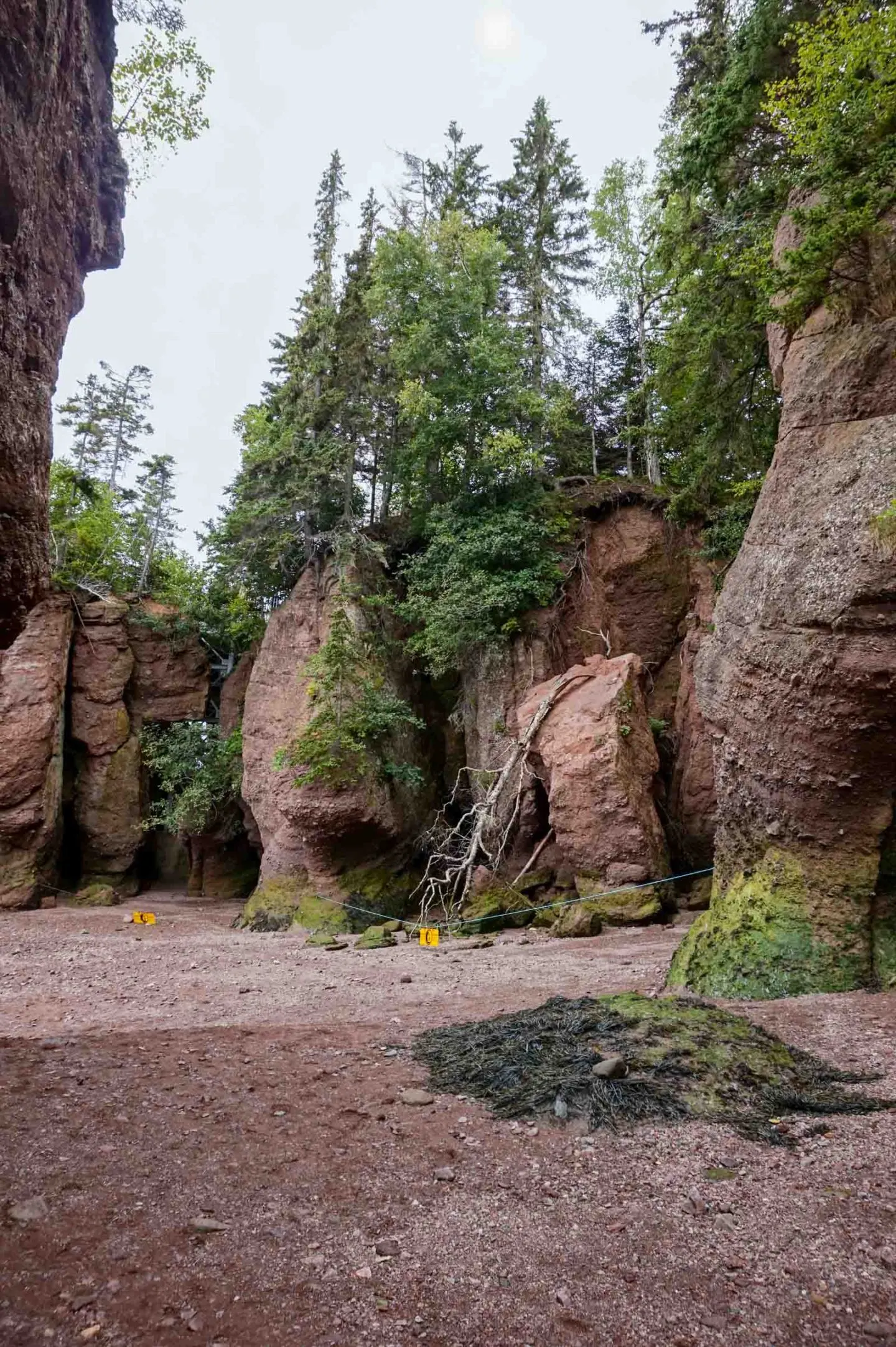
Up close you can see the caves cut into the rocks, you can see large tree root systems and you can get an idea of where the rock formations are under water at high tide. It really is an amazing site to walk through.
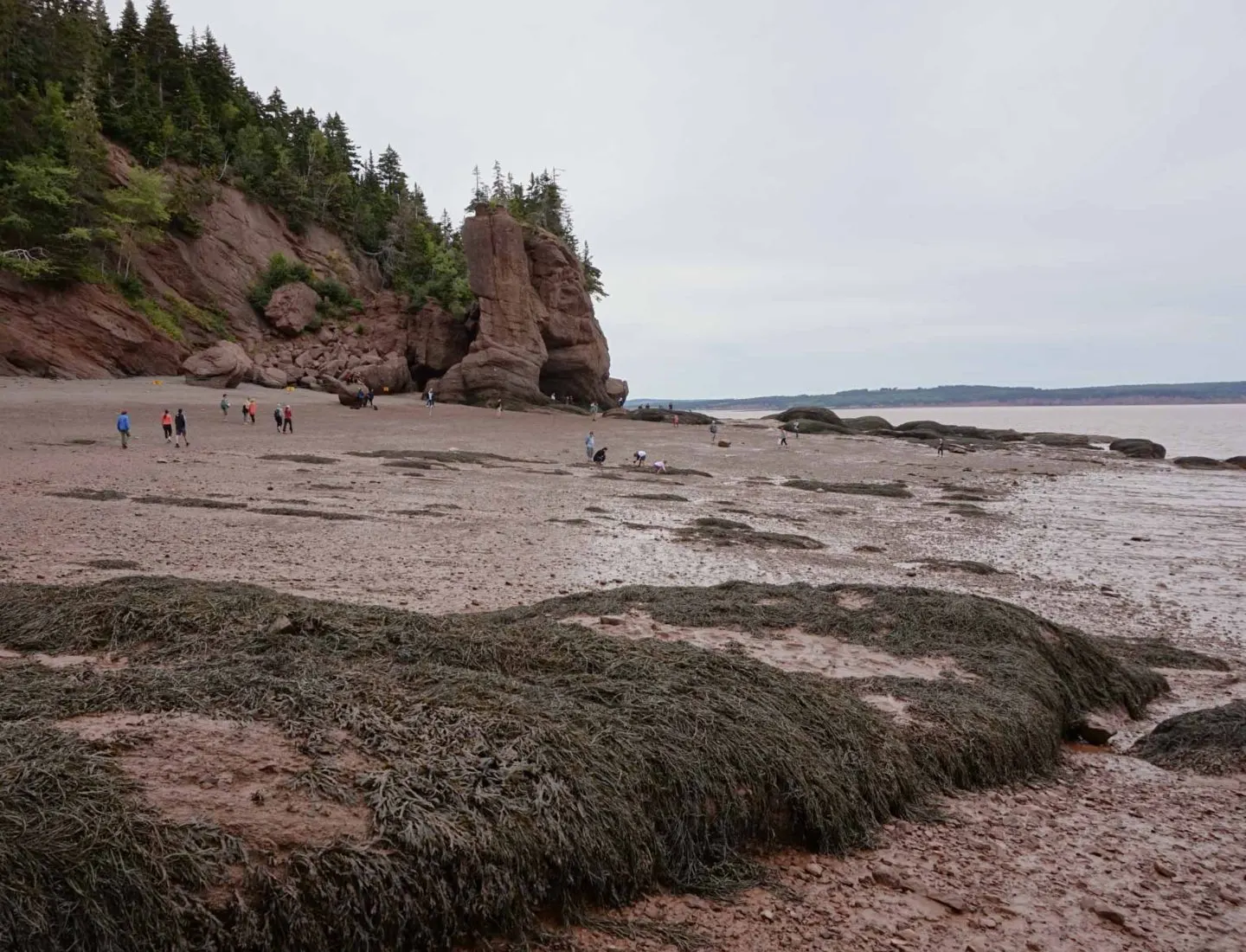
After you reclimb the stairs there is a washing station to wash the mud off your shoes and legs. I saw some people up to their knees in mud as they wandered down much closer to the water than we did. Where most people are walking the rock is quite solid but you start to sink quite easily the closer you get to the waters edge.
Remember that you will have a hike back to the visitors center and parking area. This is why I suggest sport sandals or rain boots as the ideal footwear for Hopewell Rocks. I wouldn’t want to do that hike back with wet feet!
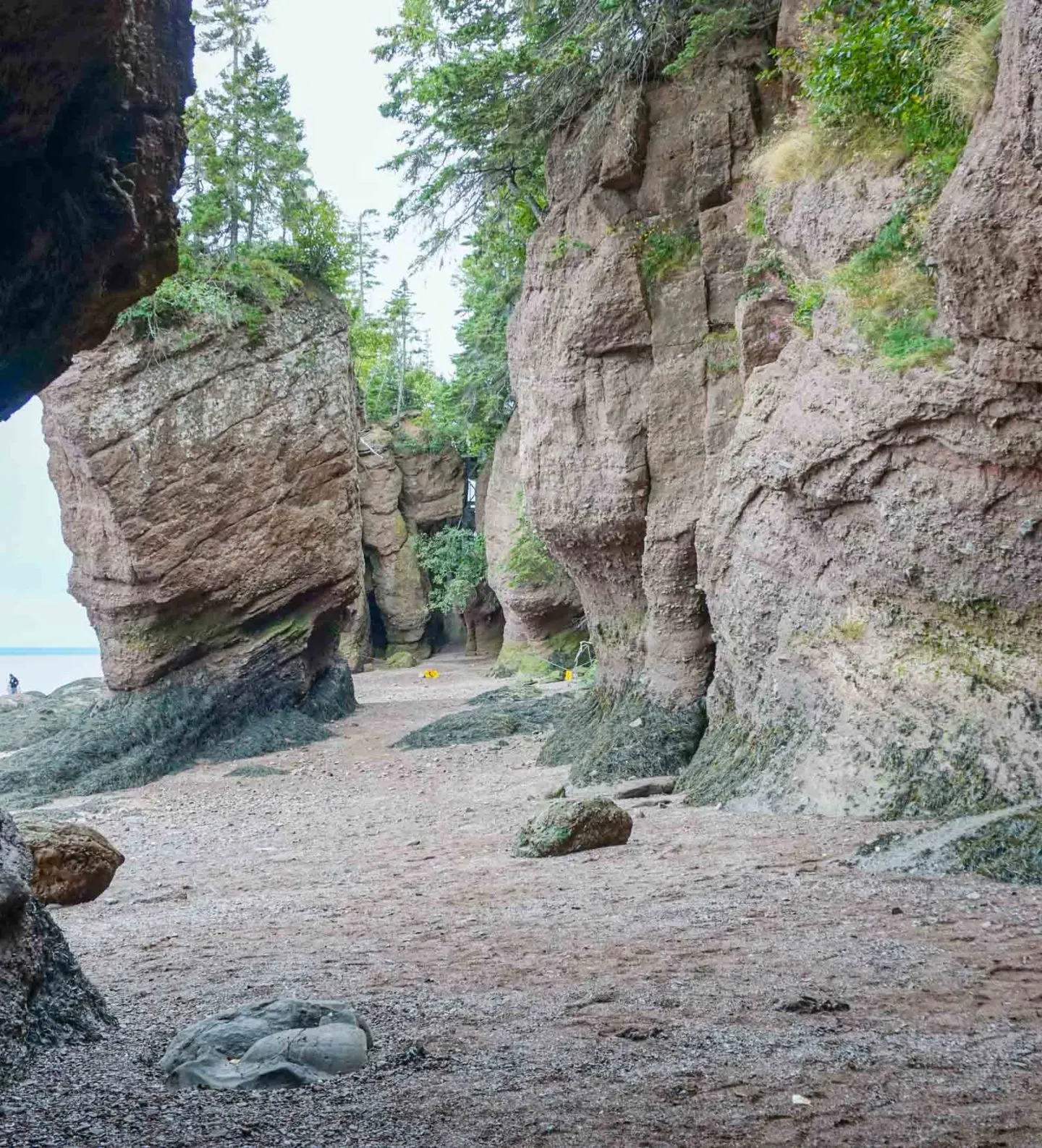
If you are visiting the Maritime province you need to make time to visit Hopewell Rocks and walk the ocean floor at low tide. It is such an amazing experience that you don’t want to miss. Pin this for when you plan your visit.

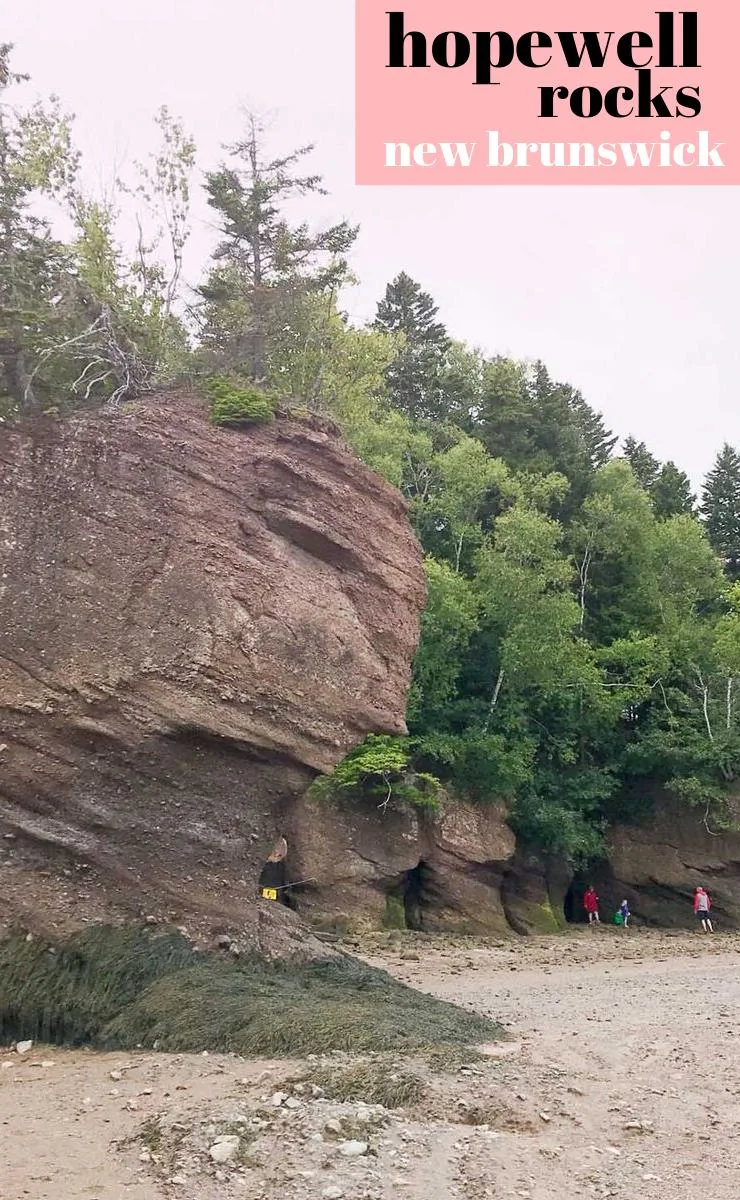
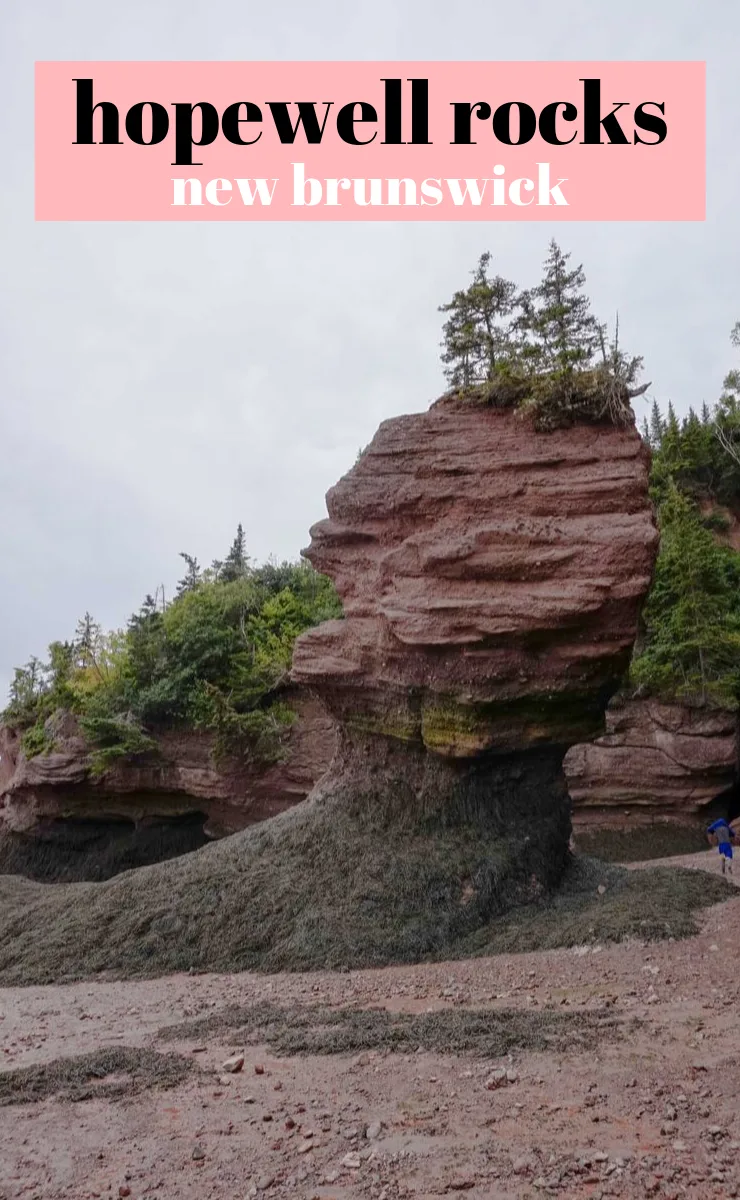
Sandra
Wednesday 11th of September 2019
Fantastic article. I never thought of it that way but we wAlkon the ocean floor in Tamarindo when we go to the beach.
Jane
Wednesday 11th of September 2019
Yes but at high tide the water covers everything in a much more extreme way. You can see where the water rises to by looking at the rock structures where they go from skinny to wide!